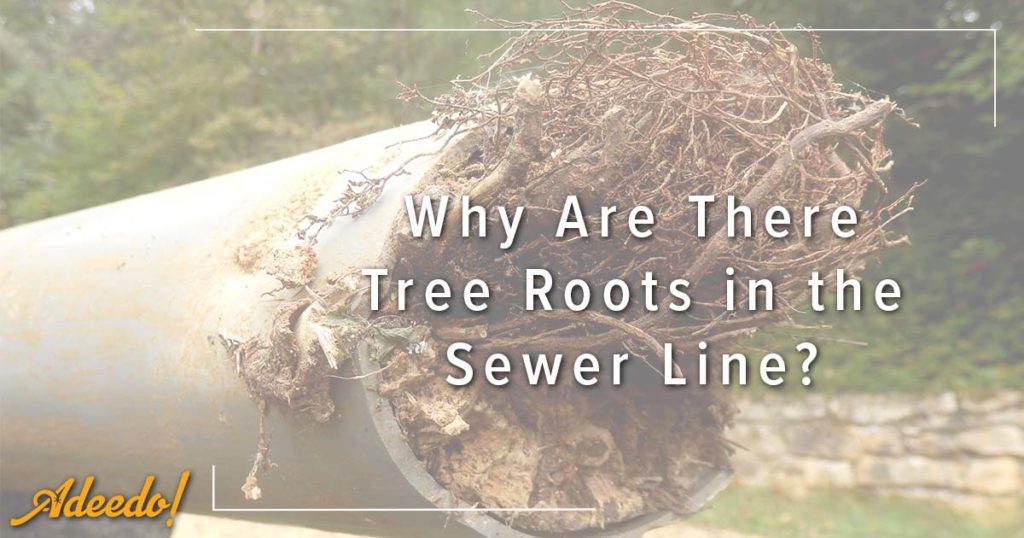Owning a home with mature trees has its perks: shade, aesthetic, maybe even growing your own fruit. However, those trees become an issue when they start to interfere with your sewer line.
Unfortunately, tree roots and sewer lines go together like peanut butter and jelly. A sewer line full of tree roots can lead to your property could be subject to drain clogs, busted pipes, and that undeniable smell of sewage.
Today, we’re sharing why you have tree roots in the sewer line in the first place and what to do about it.
Roots Grow Towards the Water Source
It’s a fact of nature. Whether it’s into a stream or into your sewer lines, trees will always grow towards a water source–even if it’s aged trees on your property. It’s just biology.
Far too often, newer homeowners won’t take their plumbing into account when planting trees and other flora around their yard. This means that the mightiest of tree roots can be slowly attacking your sewer line.
Identify and locate where your pipes are (plus your cables and lines). Do not plant trees there.
Plus, pick your foliage carefully. There are some fast-growing trees that push their roots into sewer lines, because they just grow a lot faster than other plants.
What Happens if you Have Tree Roots in the Sewer Line
Clearly, tree roots spreading through and over your sewer line is an issue. Let’s examine the damage tree roots can cause.
Broken Pipes
Don’t underestimate the strength of tree roots. They are sturdy things that will push through anything in their way. In the process, this can make your pipes collateral damage.
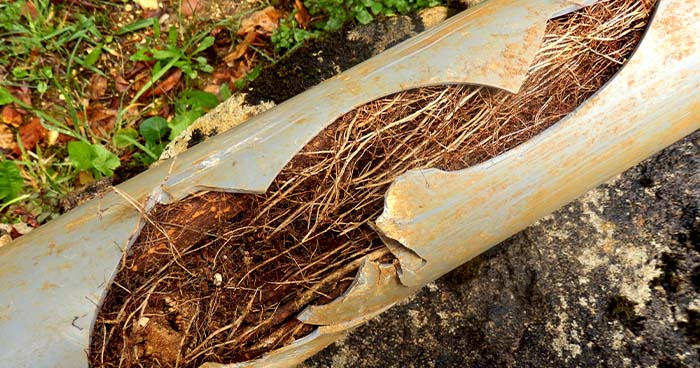
Yard Sinkhole
Tree roots can block pipes with even the thinnest strands. When that builds up alongside grime and grease, the pipes really don’t stand a chance. This greasy, grimy formula inside your sewage pipes will cause blocks in your toilets, sinks, and tubs/baths. If left to fester, it can cause your yard to seep sewage mixture.
You Will Need Repairs
Think you have a problem with tree roots? It’s essential you get yourself a licensed plumber to look at the sewer system. They can confirm the problem with video and show you how much, or how little, damage the roots have caused.
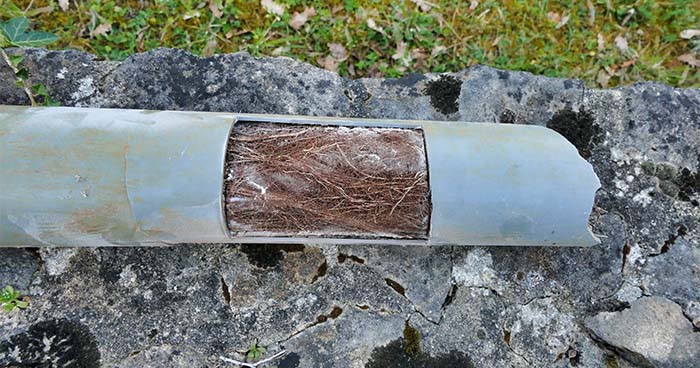
Make sure you get in touch with a professional and licensed plumbing team so they can identify the problem and provide the best solution.
Signs You Have Tree Roots in the Sewer Line
So, how do you know whether you have tree roots in your sewer line? Here are the most tell-tale signs that trees have made your sewer line part of their home.
Soft or Flooded Parts of the Lawn
First of all, take a trip around your back and front yard. Pay particular attention to your lawn, feeling for softer areas. In extreme cases, you may be able to physically see flooding.
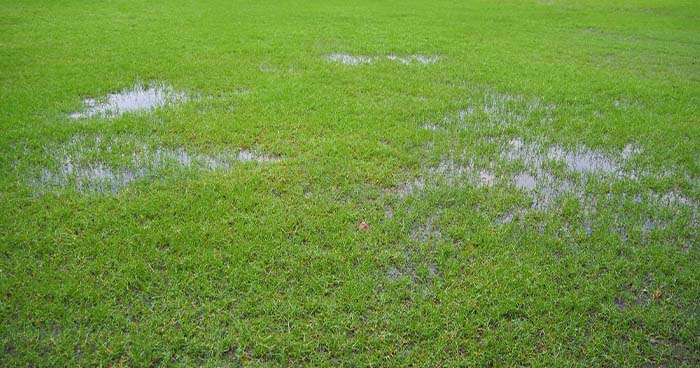
Recurring Drain Clogs
Are you having to use chemical drain cleaners down your sink, tub, toilet, or shower on a regular basis? That’s not normal and chemical drain cleaners can actually do a lot more harm than good. It’s like slapping a band-aid on a wound that requires stitches.
Sewer Smells
Probably the most unpleasant of all of the symptoms of tree roots infecting your sewer line is the pungent scent of sewage. No one wants their home to smell like sewage.

What Happens if you have Tree Roots in the Sewer Line
When it comes to tree roots and sewer lines, you can’t ignore the problem. In fact, ignoring the problem or saying, “I’ll deal with it tomorrow,” will only make things worse.
The quicker you act, the less damage you’ll be dealing with. Acting fast— as soon as you spot any of the symptoms above—is key.

There’s also a chance that your sewer lines will need replacing. After drain cleaning, a video will be taken to guarantee there are no clogs, roots, or debris left.
Do Not Treat Tree Roots with Chemicals
It can be tempting to buy chemical solutions from your local gardening or home improvement center. However, when it comes to tree roots blocking your sewer lines, it’s best to step away from the chemicals.
How to Avoid Tree Roots in the Sewer Line
If you have ever dealt with tree roots invading your sewer line, it’s likely that you don’t want to face that problem again. So, how do you avoid tree roots crashing in and through your sewer pipes?
Here are 3 top tips you should follow:
Be Mindful with Landscaping
This sounds obvious. Especially because you know trees will grow toward a water source.
However, it’s something that many homeowners overlook.
Plus, choose your trees carefully. The fast-growing trees soak up more water, making it more likely that they’ll grow through your sewer line.
Replace Any Broken Pipes
A broken pipe is a ticking time bomb. If left alone, your pipes will burst, and you will end up with a far bigger problem on your hands. An expensive one at that.
If your property was built before the 1980s, chances are that your pipes are a specific type of pipe called Orangeburg pipe. These are particularly prone to breakage by tree roots. Plus, any pipes made from clay or concrete should be replaced with HDPE (high density polyethylene).
Consider An Annual Plumbing Inspection
Our final top tip is to consider scheduling an annual plumbing inspection. Get in touch with a licensed plumber to book a routine sewer drain system service with micro-video hardware. This means the plumber can visually assess the entire interior of your pipe.
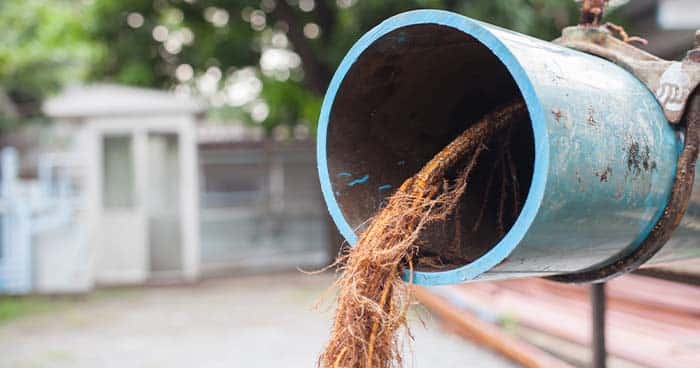
Tree roots can be a nightmare if they begin invading your sewage line. However, this can all be prevented with identification, quick action, and routine checks.
If you have any questions or think you may have tree roots in the sewer line, reach out to the experts at Adeedo.
